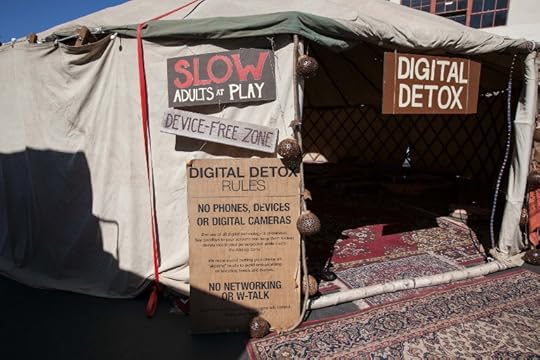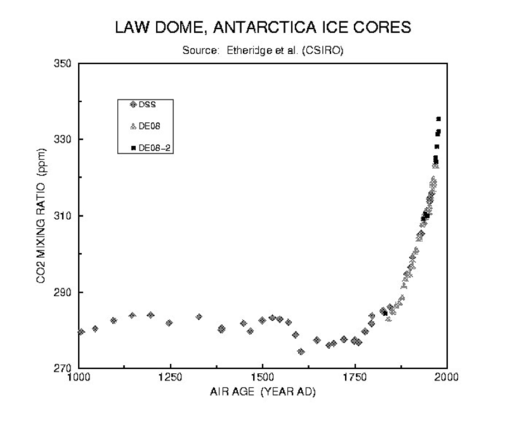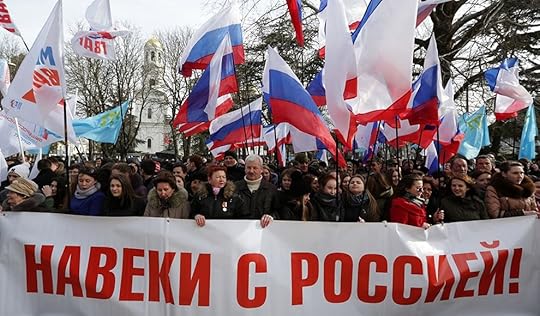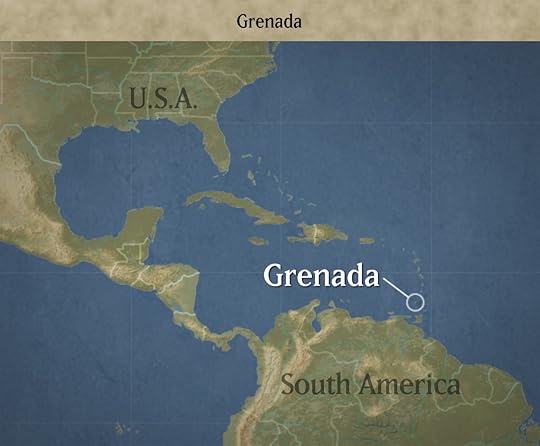Steve Bull's Blog, page 1196
February 9, 2018
Donald Trump’s Superficial Patriotism at the Twilight of U.S. Empire

Already long ago, from when we sold our vote to no man, the People have abdicated our duties; for the People who once upon a time handed out military command, high civil office, legions — everything, now restrains itself and anxiously hopes for just two things: bread and circuses.
– Juvenal
Despite the title, I don’t want this post to be all about Donald Trump. The truth of the matter is all politicians love superficial patriotism. It’s why they all claim to care deeply about the troops, yet allow veterans to wait weeks or months to see a doctor after sending them to fight pointless imperial overseas wars based on fabrications. All these disingenuous politicians are total frauds, but they tend sell the same destructive policies in different ways. As such, it’s important to understand how they manipulate and divide us.
First and foremost, standing for the National Anthem, saluting the flag or cheering a military parade is not “supporting the troops.” If you think such trivial and superficial acts represent anything beyond lazy surface level virtue signaling you’re a huge part of the problem. Your thoughtlessness and fake patriotism is exactly why our young kids are being sent off to die and murder other young kids halfway across the world to pad the coffers of plutocrats and the egos of empire obsessed sociopaths in D.C. Not only are such acts not patriotism, your phony gestures help grease the wheels of global death and destruction.
Having a strong military for national defense is a necessary thing, but the purpose of such a force should always and in all circumstances be defense. A major problem arises when you have a global empire coupled with the strongest military on earth.
…click on the above link to read the rest of the article…
Technology and Its Discontents

Tucked within the pages of the January issue of the Agriview, a monthly farm publication published by the State of Vermont, was a short survey from the Department of Public Service (DPS). Described as an aid to the Department in drafting their “Ten Year Telecom Plan”, the survey contains eight questions, the first seven of which are simple multiple-choice queries about current internet and cell phone service at the respondent’s farm. The final question is the one that caught my eye:
“In what ways could your agriculture business be improved with better access to cell signal or higher speed internet service?”
Two things are immediately revealed by this question:
(a) The DPS believes that the only possible outcome from faster and better telecommunication access is that things will be “improved”.
(b) If you disagree with the DPS on point (a), they don’t want to hear about it.
A cynic might conclude that the DPS is only looking for survey results that justify decisions they’ve already made, and that’s probably true. But the department’s upbeat, one-dimensional outlook on technological change is actually the accepted norm in America. In his book In the Absence of the Sacred, Jerry Mander points out that new technologies are usually introduced through “best-case scenarios”: “The first waves of description are invariably optimistic, even utopian. This is because in capitalist societies early descriptions of new technologies come from their inventors and the people who stand to gain from their acceptance.”
Three acres and a cow
My title comes from a 19th century English song, which includes this verse…
If all the land in England was divided up quite fair / There would be work for everyone to earn an honest share / Well some have thousand acre farms which they have got somehow / But I’ll be satisfied to get three acres and a cow
…but more immediately, it comes from a great evening of folksong and storytelling I heard recently in which Robin Grey and Katherine Hallewell told – well, not quite the history of the world in 10½ blog posts so much as the history of the fight for access to land by ordinary people in Britain in 11 lovely folk songs. If you get a chance to see the show, I’d thoroughly recommend it (and for those in my neck of the woods, it’s returning to Frome on 10 March). It’s not quite as comprehensive as my recent historithon here at Small Farm Future, but it’s a darned sight more tuneful.
The main aim of this post, though, isn’t to talk about the show so much as to pick up on a couple of themes hanging over from various previous posts and post cycles. In particular, I want to address a point that Ruben made in a comment concerning the need for a sustainable post-capitalist society to produce an agrarian surplus in order to fund a division of labour and thus a viably diverse social order. I want to marry it with what I called my 99/1 test (in which a food-farm system is defined as sustainable if it can persist with 99% of food sourced from within 10 miles of any given retail point and with fossil energy use set at 1% of the current level).
…click on the above link to read the rest of the article…
Long-term climate variability ‘could fall’ as the world warms
Long-term climate variability is the range of temperatures and weather patterns experienced by the Earth over a scale of thousands of years. New research suggests it could fall as the world warms.
A study using data taken from fossils and ice cores finds that long-term temperature variability decreased four-fold from the Last Glacial Maximum (LGM) around 21,000 years ago to the start of the Holocene around 11,500 years ago. Within this period, natural processes caused the planet to warm by around 3-8C.
If future global emissions are not curbed, human-driven global warming could cause further large declines in long-term temperature variability, the lead author tells Carbon Brief, which may have far-reaching effects on the world’s seasons and weather.
However, it is still unclear how a decline in long-term variability could affect the frequency of extreme weather events, she adds. This is because the chances of an extreme event happening could be influenced by both short- and long-term climate variability, as well as global temperature rise.
Digging up the past
The new study, published in Nature, is the first to make a global assessment of how long-term temperature variability changed from the LGM to the Holocene.
During the LGM, the world’s last major ice age, snow covered much of Asia, Europe and North America. Yet, within a few thousand years, global temperatures rose by around 3-8C, causing the ice to thaw and the world to enter its current geological period, the Holocene.
The cause of this temperature rise is still disputed by scientists, but research suggests the natural release of large stores of CO2 from the world’s oceans may have played a role.
…click on the above link to read the rest of the article…
Venezuela Is Moving From Crisis To Collapse

Venezuela’s slumping oil production is a “clear and present danger” to the oil market, RBC Capital Markets said this week.
Venezuela’s production continues to fall at a frightening clip, falling to about 1.6-1.7 million barrels per day (mb/d) in December. On an annual basis, Barclays predicts that Venezuela’s output will fall sharply from 2.18 mb/d in 2017 to just 1.43 mb/d this year, a decline of roughly 700,000 bpd.
The steep declines will increasingly be felt worldwide given that oil demand is growing briskly and the OPEC/non-OPEC coalition continues to keep 1.8 mb/d of supply off of the market. Global inventories have declined so steeply that unexpected geopolitical surprises carry more influence than they used to.
“We continue to contend that, given 2018’s tightening oil market, any potential geopolitically driven supply disruption would have an outsized impact versus recent years when the market was awash in crude,” Helima Croft, head of global commodity strategy at RBC Capital Markets, wrote in a research note. “The clear and present danger to watch is Venezuela, which arguably has progressed past the risk stage given that production is in freefall.
RBC Capital Markets echoed Barclays, predicting output declines on the order of 700,000 to 800,000 bpd.
While that scenario is really bad, the uncertainty for the country’s output is probably skewed to the downside. The economic, political and humanitarian crisis is only getting worse. The government is in a debt vice, and it is hard to see how it will meet payments this year. The IMF predicts that inflation is running at a 13,000 percent annual rate. GDP is expected to shrink by 15 percent this year.
…click on the above link to read the rest of the article…
Blain: “Here’s Why This Gets Worse Before It Gets Better”
Wobble continues. Does a Correction morph into a Crash?
“They would never evolve. They shouldn’t have survived.…. Evolution was something that happened to other species..”
Not looking like a positive morning out there. Stocks are down 10% – so officially it’s a correction! Markets are still wobbling. Folk who thought they’d survived Monday’s carnage intact are new beginning to wonder if they should press the panic-button, or pull the dump-lever just in case this gets worse and liquidity dries up. The US has managed to shut itself down again. Our best hope at the Winter Olympics has broken her heel. If this all feels sickeningly familiar – Welcome to 2008 Part 2. Market wobbles, you heave a sigh of relief, and then it pukes massively all over you.
Early this morning it was raining. A storm is coming. And I must have dropped my wallet after paying for a Taxi early this morning.
My gut feel – based on active participation in every single market Donnybrook/Stamash since 1987 – is this gets worse before it gets better. And that’s a good thing – because this is when the great opportunities present themselves!! Cry Havoc and unleash the brokers…
But first we need to talk about my wallet. I appreciate most of you are more concerned with markets than my wallet, but does Life care? Losing my wallet is probably far less worse than will happen to most folk. Yet, its illustrative of something: I called my Amex card to cancel. Lots of help, new card with me early next week. Called my bank. Lots of unhelpful questions and the impression I was the 10 thousandth idiot to a lost my wallet this morning. Sympathy? Look for it in a dictionary is the best advice. New card after 6 business days? Perhaps.
…click on the above link to read the rest of the article…
Is Cryptocurrency a Ponzi Scheme?
Just three weeks ago Bitconnect announced it was shutting down after being accused of running a Ponzi scheme. Techcrunch chronicles Bitconnect’s decline noting how the term “pyramid scheme” was not an unfair assessment as to what was going on:
“Bitconnect was an anonymously-run site where users could loan their cryptocurrency to the company in exchange for outsized returns depending on how long the loan was for. For example, a $10,000 loan for 180 days would purportedly give you ~40% returns each month, with a .20% daily bonus. Bitconnect also had a thriving multi-level referral feature, which also made it somewhat akin to a pyramid scheme with thousands of social media users trying to drive signups using their referral code.”
Typically a Ponzi scheme is characterized by first by promising large, unrealistic returns such as the ~40% monthly return. The promise of these sorts of returns largely regarded as both suspicious and impossible, even under even the most aggressive market conditions.
Another point of critique aimed at Bitconnect was the fact that those who sign up for its service are encouraged to share its affiliate marketing and affiliate links. If you look online for any discussion of BitConnect you will find the comments riddled with affiliate links. The reason for this is that those who spread the affiliate links were allegedly to be rewarded with higher returns on their original deposit if the link they posted is later used to sign up a new customer. Best Bitcoin Exchange chronicles how one user is reported to have lost over $400,000 in the demise of Bitconnect. And many others have made a legal challenge in a class-action lawsuit about their losses in this market.
All this, however, begs the question that many of us have been asking for some time: are cryptocurrencies an elaborate Ponzi scheme?
…click on the above link to read the rest of the article…
America Dumps Its Fracking Waste in My Ohio Town
My southeastern Ohio town in the Appalachian foothills is a small, rural place where the demolition derby is a hot ticket, Walmart is the biggest store, and people in the surrounding villages must often drive for 30 minutes to grocery shop.
We hold the unfortunate distinction of being the poorest county in the state: an area that is both stunning — with rolling hills, rocky cliffs, pastures, and ravines — and inaccessible, far from industry.
It’s here, at the Hazel Ginsburg well, that fracking companies dump their waste. Trucks ship that sludge of toxic chemicals and undrinkable water across the country and inject it into my county’s forgotten ground.
My step-grandmother, the daughter of a Kentucky miner, used to tell me stories of washing her clothes in polluted red water, downstream from mines. Coal companies exploited employees like her father, paying him in company scrip and keeping him poor and exploiting the land.
That kind of abuse continues. It’s just changed shape. The Ginsburg well has a long history of violations, so many that the Ohio Department of Natural Resources ordered it shut.
It was not.
It’s a pit well, which looks like an old swimming pool, covered by a tarp. No sign indicates the presence of chemicals, just a “no trespassing” sign. Allegedly, a guard will snap your picture if you stop or turn your car around. The well is located in a residential area, with houses — some with swing sets — just down the road.
In 2012, Madeline ffitch (whose last name is spelled lowercase and with the double ff) was arrested there. Her arrest was part of an action by a local anti-fracking group, Appalachia Resist. The then 31-year-old’s arms were locked into cement-filled plastic drums just before the gates, blocking the entrance.
…click on the above link to read the rest of the article…
Living With Truth Decay
“Once a policy has been adopted and implemented, all subsequent activity becomes an effort to justify it”
— Barbara Tuchman, The March of Folly: From Troy to Vietnam (1984. p. 245).
In the 20th-century but still fun party game called Telephone, people sit in a circle and someone whispers a phrase or sentence to the person to the left, who whispers it to their left, around the clock, until it reaches the original speaker, who annunciates what s/he sent and received. The final utterance may make sense, but it is almost never the one sent and is often complete nonsense. This is one form of truth decay.
Truth is a relatively scarce commodity. Science progresses by disproving theories, not proving them (that only happens in mathematics). In the real world, everything you know to be true just hasn’t been disproved yet, so it’s a good idea to stay tuned.
Not only is the amount of truth finite, it doesn’t grow very fast. Facts and opinions, on the other hand do, thanks to an intensive bombardment of truth-deficient information. Factoids, received wisdom and regurgitated opinions about everything imaginable rain upon us like nuclear fallout. Attempts to verify facts that swim in oceans of discourse finds them as slippery as eels. Truths decay like echoes do, sloping toward unintelligibility inside our echo chambers.
Fishing for evidence floating in the Net is far from compiling facts in a controlled empirical study and—contrary to the scientific method—is likely done to support a hypothesis, not to disprove one. In any event, facts are not truths. Truth rests on facts, vetted as dispassionately as possible. For instance, it’s a fact that mean global CO2 in the atmosphere officially was 404.55 PPM at the end of 2016 and 406.75 one year later, or one-half a percent more. Here are other fun facts about that:

…click on the above link to read the rest of the article…
Russia’s “Dirty Policy of Occupation” of Crimea and Ronald Reagan

On March 18th, 2014 following a popular self-determination referendum of the people of Crimea the Russian Federation declared reunification with the Crimean Peninsula which was illegitimately transfered to the Soviet Ukraine in 1954 by Soviet Communist Party leader Nikita Khrushchev. Nevertheless, the western global corporative media, politicians and statesmen classified the act as a matter of “aggression, violation of international law and unlawful occupation of a part of territory of an internationally recognized independent state and the UN’s member”. Russia’s authorities on this occasion issued an official statement that Crimea’s re-annexation by Russia is based on the same self-determination rights as of the people (the Albanians) of Kosovo in 2008 which self-proclaimed independence from Serbia (by Kosovo parliament without any popular referendum) is already recognized by almost all western liberal governments.
The following text is a personal contribution to better understanding of the case of Russia’s “dirty policy of occupation and annexation” of Crimea in March 2014.
Grenada is an independent state, a member of the UN, located in the southern portion of the Caribbean Sea very close to the mainland of the South America (Venezuela). The state is composed by southernmost of the Windward Islands combined with several small islands which belong to the Grenadines Archipelago, populated by almost 110,000 people of whom 82% are the blacks (2012 estimations). The state of Grenada is physically mostly forested mountains’ area (of volcanic origin) with some crater lakes and springs. In the valleys are bananas, spices and sugar cane grown. The country is out of any natural wealth significance but has relatively high geostrategic importance. Economy was and is primarily agricultural with some very limited small-scale industry of the food production nature with developing tourism sector as growing source of the national GDP. The state budget is constantly under a high level of foreign debt (a “debt slavery” phenomenon).
…click on the above link to read the rest of the article…



